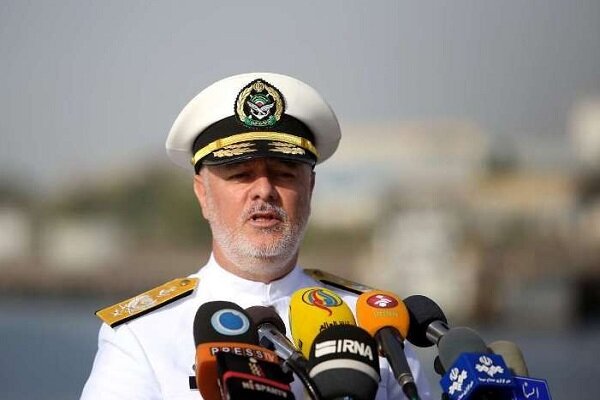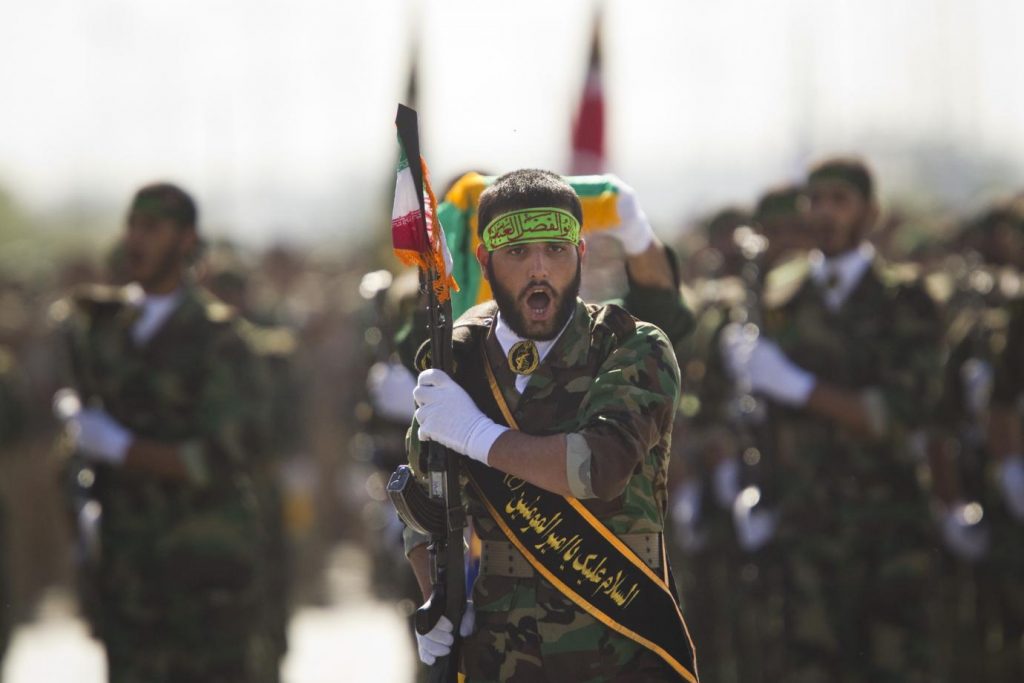
The Iranian Army’s Navy Rear Admiral Hossein Khanzadi inaugurated the navy’s new headquarters in the southern Iranian city of Bandar Abbas on November 21. Though the construction work continues, the navy will continue to relocate from Tehran in phases.

Admiral Khanzadi said, “A significant part of Navy HQ elements will be transferred [to Bandar Abbas] and the naval forces will be led with an increased focus.” The Iranian media reported that three campuses spread over 26,432 square meters will house the headquarters of the navy. The Bandar Abbas naval facility on the Persian Gulf along the Strait of Hormuz was constructed during the 1970s as the headquarters of the Imperial Iranian Navy and was shifted there in 1977 from Khorramshahr.
Tehran eyes strategic and tactical dividends by placing both its navies – the Islamic Republic of Iran Navy (IRIN) and the Islamic Revolutionary Guard Corps Navy (IRGCN) – in close contact with each other at the strategically located military city. While the IRIN is a strategic force, the IRGCN is a tactical one.
Why should a country have two parallel naval forces? The answer lies in the revolutionary leadership’s lack of trust in Iran’s traditional armed forces called Artesh. Khomeini approved the establishment of a multi-pronged force on the lines of the Republican Guards. The pre-revolutionary military establishments were largely ignored despite their valiant battles against their Iraqi foes. Articles 143 and 150 of the Constitution remain intact, albeit the former was amended in 1989. Article 143 holds the regular army – Artesh – ‘responsible for protecting the independence and territorial integrity of the country and the order of the Islamic Republic.’ Article 150 assigns the IRGC ‘the role of protecting the Revolution and its achievements’ but stresses institutional harmony among the various branches of the armed forces. The IRIN’s mission is to defend Iran’s territorial waters, ports, and islands as well as to secure Iran’s exclusive economic zones for resource exploitation while the IRGCN and the Coast Guard deal with subversive and criminal threats from adversaries as well as smugglers.
The shifting of the naval headquarters, induction of newer and larger vessels, and expeditions in the Atlantic Ocean are sufficient indicators of Iran’s leadership reposing greater confidence in the otherwise neglected arm of its military. For over three decades, in particular, the IRIN has been a green-water navy operating to fight in regional waters. The recently organized annual naval exhibition at Bandar Abbas boasted the IRIN’s indigenously-improvised weapons systems as well as forthcoming heavy naval vessels. The IRIN’s submarine fleet is dated despite various upgrades while its destroyers, which are mostly of western origin, are rusted due to lack of overhaul facilities. Iran’s navy, like its air force, could have received a significant upgrade had the Islamic revolution not interrupted the plans of the Shah’s government.
Tehran shifting its naval resources to Bandar Abbas will help address the operational challenges of interoperability between the IRIN and the IRGCN. With its aspirations to project power by building a blue-water navy, Iran intends to adopt a more assertive posture vis-à-vis its challengers.
Being the first line of defense , Tehran positioning its naval headquarters closer to various operational bases will help it save logistical time in organizing joint meetings and joint training missions as well as potentially help in launching better-coordinated operations in Iran’s territorial waters. No doubt the bifurcation of command and control between the IRIN and the IRGCN will remain an irritant in the strategically significant and crowded waters of the Gulf.
Also, the two navies will be able to practice acting in unison during ongoing tensions and hostilities. The shifting of headquarters to Bandar Abbas provides Iran’s top military commanders an opportunity to more frequently supervise overseas simulationsincluding joint training missions as well as the sharing of assets and troops. Over the past forty years, the IRGC has trained Iranian army officers to be ideologically at par with it. Thus, the differences or irritants between mid-level or junior-level officers won’t find a conducive atmosphere to balloon and disrupt operability.

Despite the positives of shifting naval headquarters to Bandar Abbas, this naval facility becomes ever more vulnerable to enemy attacks due to the presence of the twin headquarters of the IRIN and the IRGCN. In addition, submarines, aircraft, and helicopter pads are located there as well as the Shahid Darvishi defense complex, a subsidiary of the Maritime Industries Group of Defense Industries Organization. Though heavily guarded with air-defense batteries, the Gulf states and their western allies have the capacity to confuse, jam and annihilate Iran’s defensive measures at Bandar Abbas.
Relocation of naval headquarters can ensure better preparation for the battlefield and the more effective management of military assets during a standoff or all-out attack. Even within Gulf waters, safety in numbers isn’t guaranteed for Iran. There is no such thing in the open seas. The IRGCN has many speed-boats and drones that can start a conflict but they won’t be able to sustain one. The responsibility will automatically be handed to the navy, which remains miserably short of deadly destroyers or frigates. The gamble Iran’s strategic planners are playing is based on two premises: a). There won’t be an all-out conflict and neither of its foes, from near or afar, would launch punitive attacks on its strategic assets. If at all, the response will be symbolic and for news headlines; b). The consolidation of Iran’s air and naval assets as well as its decision-making structure will deter foreign forces from meddling in Gulf affairs. Iran has tested its adversaries’ resolve to fight a war by not only shooting down a CIA drone but also by launching devastating attacks on Aramco’s oil facilities in Saudi Arabia.
Iran is gradually moving to advance its naval diplomacy. Holding joint naval exercises with its allies and working under multilateral arrangements against terrorism, piracy, as well as participating in environmental monitoring, will bring Iran some much-needed goodwill and clout. Iran, after all, does not want to be confined to the Strait of Hormuz and the Gulf. If the Joint Comprehensive Plan of Action (JCPOA) stays intact, the country will gain some space in 2020 to acquire tactical military weapons besides reducing the hesitancy amongst its reluctant friends such as India to hold joint military drills, especially with its navy. The scope of Iran’s naval diplomacy and strategic messaging has been limited not only due to the UNSC and American sanctions but also due to the revolutionary leadership’s indifferent attitude towards the navy.
The shifting of the IRIN’s headquarters and the induction of newer domestically produced vessels and weapons systems indicate the beginning of a costly and complex transformation for the IRIN to fill a wide technological and numerical gap.
